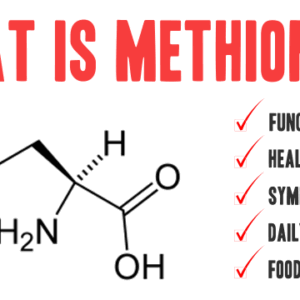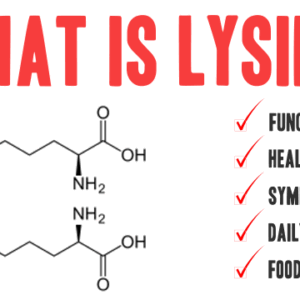What Is Magnesium?
Magnesium is a macromineral required for optimal health and involved in over 300 enzymatic reactions in the body. It plays a critical role in energy production, muscle and nerve function, bone development, and heart rhythm regulation.
Although magnesium is found in various foods, magnesium deficiency is common due to poor dietary habits, certain medications, and chronic diseases.
Functions of Magnesium in the Body
1. Muscle and Nerve Function
Magnesium acts as a natural calcium blocker, helping muscles relax after contraction. It supports proper nerve impulse transmission and reduces cramping and muscle twitches.
2. Energy Production (ATP Synthesis)
Magnesium is required for the formation of ATP (adenosine triphosphate), the main energy molecule in cells. Without it, energy metabolism is impaired.
3. Bone Health
About 60% of magnesium is stored in bones. It contributes to bone density and structure, working alongside calcium and vitamin D.
4. Cardiovascular Health
Magnesium helps regulate heart rhythm, blood pressure, and vascular tone, making it crucial for cardiovascular function.
5. Mood and Cognitive Health
Magnesium modulates neurotransmitters and may play a role in reducing anxiety, depression, and even migraine frequency.
Recommended Daily Intake of Magnesium
| Life Stage | RDA (mg/day) |
|---|---|
| Children (1–13 years) | 80–240 mg |
| Teen Boys (14–18 years) | 410 mg |
| Teen Girls (14–18 years) | 360 mg |
| Adult Men (19–30 years) | 400 mg |
| Adult Women (19–30 years) | 310 mg |
| Adult Men (31+ years) | 420 mg |
| Adult Women (31+ years) | 320 mg |
| Pregnant Women | 350–400 mg |
| Lactating Women | 310–360 mg |
Source: National Institutes of Health (NIH)
Magnesium-Rich Foods
Best Food Sources
Leafy greens (spinach, Swiss chard)
Nuts and seeds (almonds, pumpkin seeds)
Whole grains (quinoa, brown rice)
Legumes (black beans, lentils)
Fatty fish (salmon, mackerel)
Avocados
Dark chocolate (70%+ cacao)
Note: Magnesium content in food depends on soil quality—organic and minimally processed foods tend to have higher levels.
Signs and Symptoms of Magnesium Deficiency
Deficiency (hypomagnesemia) may result from:
Poor diet
Gastrointestinal disorders (e.g., Crohn’s, celiac disease)
Alcoholism
Type 2 diabetes
Certain medications (diuretics, PPIs, antibiotics)
Common Symptoms Include:
Muscle cramps and spasms
Fatigue or weakness
Nausea or loss of appetite
Tingling or numbness
Irregular heartbeat
Irritability, anxiety, or depression
Chronic deficiency may increase the risk of osteoporosis, insulin resistance, hypertension, and cardiac arrhythmias.
Magnesium Supplementation
Magnesium supplements are commonly used for:
Muscle cramps
Constipation
Migraines
PMS symptoms
Stress relief
Types of Magnesium Supplements:
Magnesium citrate: High bioavailability, often used for constipation.
Magnesium glycinate: Gentle on the stomach, good for anxiety and sleep.
Magnesium oxide: Common, but less bioavailable.
Magnesium chloride: Well-absorbed and often used topically.
Tolerable Upper Intake Level (UL) for supplemental magnesium: 350 mg/day (not including food sources).
Risks of Excess Magnesium
Excess magnesium from food sources is not harmful. However, high doses from supplements may cause:
Diarrhea
Nausea
Abdominal cramps
Irregular heartbeat (extreme cases)
Low blood pressure
People with kidney disease must monitor magnesium intake carefully, as the body may not excrete excess efficiently.
Conclusion
Magnesium is a fundamental mineral for human health, playing essential roles in muscle function, cardiovascular regulation, nervous system stability, and energy production. Meeting your daily magnesium requirements through a varied, whole-foods-based diet is ideal, but supplementation may be necessary in some cases.
To support long-term wellness, aim to include magnesium-rich foods daily and consult a healthcare provider before starting supplements.
References:
National Institutes of Health – Magnesium Fact Sheet for Health Professionals
Gröber U, Schmidt J, Kisters K. Magnesium in prevention and therapy. Nutrients. 2015;7(9):8199–8226. https://doi.org/10.3390/nu7095388
Rosanoff A, Dai Q, Shapses SA. Essential nutrient interactions: does low or suboptimal magnesium status interact with vitamin D and/or calcium status? Advances in Nutrition. 2016;7(1):25–43. https://doi.org/10.3945/an.115.008631
Volpe SL. Magnesium in disease prevention and overall health. Advances in Nutrition. 2013;4(3):378S–383S. https://doi.org/10.3945/an.112.003483













